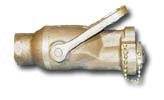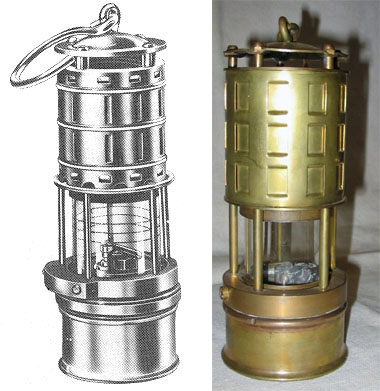| The flame safety lamp was used for many years, from
before WWII until the 1970s. While it could detect the
presence of flammable gases, it was intended solely to
test an atmosphere for oxygen deficiency, to ensure that
sufficient oxygen was present to support life. The lamp
was constructed of non-sparking brass and had a glass
globe and cotton wick. The lamp used naphtha as its
fuel. Explosions did occur because of defective parts,
incorrect procedure, or improper assembly of the lamp.
When testing with the flame safety lamp, it had to be
moved carefully and slowly while holding it as close to
vertical as possible. The following indications of flame
behavior were a result of conditions in the atmosphere
being tested; these indications had to be assessed by
the test observer: Flame dies out: insufficient oxygen
(less than 16% by volume) Flame dies out with a slight
“pop”: explosive concentration of gases or vapors Flame
flares up brightly: less explosive concentration of
gases or vapors Flame flares up, then goes out: rich
concentration of explosive gases or vapors The test
observer had to ensure that the flame safety lamp flame
burned for five minutes, with the flame adjusted to 3/8
inch, for proper warm up before it was allowed to be
taken into a space. It had to remain under constant
observation while testing, and it had to be kept still
for several seconds in each location. When entering a
tank, void or compartment with the flame safety lamp,
the test observer had to wear an OBA or hose air-line
mask. |




